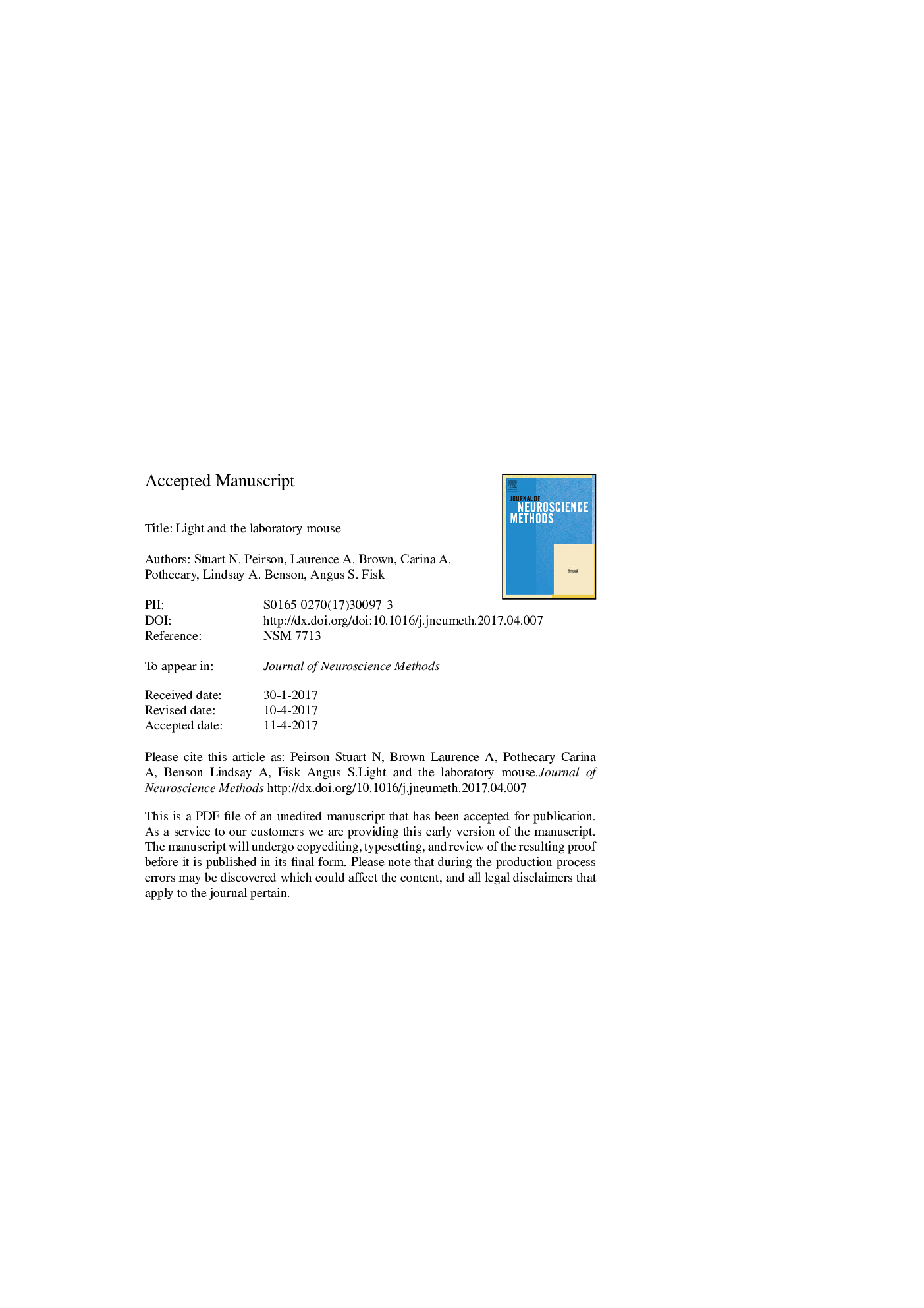| کد مقاله | کد نشریه | سال انتشار | مقاله انگلیسی | نسخه تمام متن |
|---|---|---|---|---|
| 8840375 | 1614569 | 2018 | 28 صفحه PDF | دانلود رایگان |
عنوان انگلیسی مقاله ISI
Light and the laboratory mouse
ترجمه فارسی عنوان
نور و موش آزمایشگاهی
دانلود مقاله + سفارش ترجمه
دانلود مقاله ISI انگلیسی
رایگان برای ایرانیان
کلمات کلیدی
دوران کودکی، شبکیه چشم، طول موج رفاه،
موضوعات مرتبط
علوم زیستی و بیوفناوری
علم عصب شناسی
علوم اعصاب (عمومی)
چکیده انگلیسی
Light exerts widespread effects on physiology and behaviour. As well as the widely-appreciated role of light in vision, light also plays a critical role in many non-visual responses, including regulating circadian rhythms, sleep, pupil constriction, heart rate, hormone release and learning and memory. In mammals, responses to light are all mediated via retinal photoreceptors, including the classical rods and cones involved in vision as well as the recently identified melanopsin-expressing photoreceptive retinal ganglion cells (pRGCs). Understanding the effects of light on the laboratory mouse therefore depends upon an appreciation of the physiology of these retinal photoreceptors, including their differing sens itivities to absolute light levels and wavelengths. The signals from these photoreceptors are often integrated, with different responses involving distinct retinal projections, making generalisations challenging. Furthermore, many commonly used laboratory mouse strains carry mutations that affect visual or non-visual physiology, ranging from inherited retinal degeneration to genetic differences in sleep and circadian rhythms. Here we provide an overview of the visual and non-visual systems before discussing practical considerations for the use of light for researchers and animal facility staff working with laboratory mice.
ناشر
Database: Elsevier - ScienceDirect (ساینس دایرکت)
Journal: Journal of Neuroscience Methods - Volume 300, 15 April 2018, Pages 26-36
Journal: Journal of Neuroscience Methods - Volume 300, 15 April 2018, Pages 26-36
نویسندگان
Stuart N. Peirson, Laurence A. Brown, Carina A. Pothecary, Lindsay A. Benson, Angus S. Fisk,
